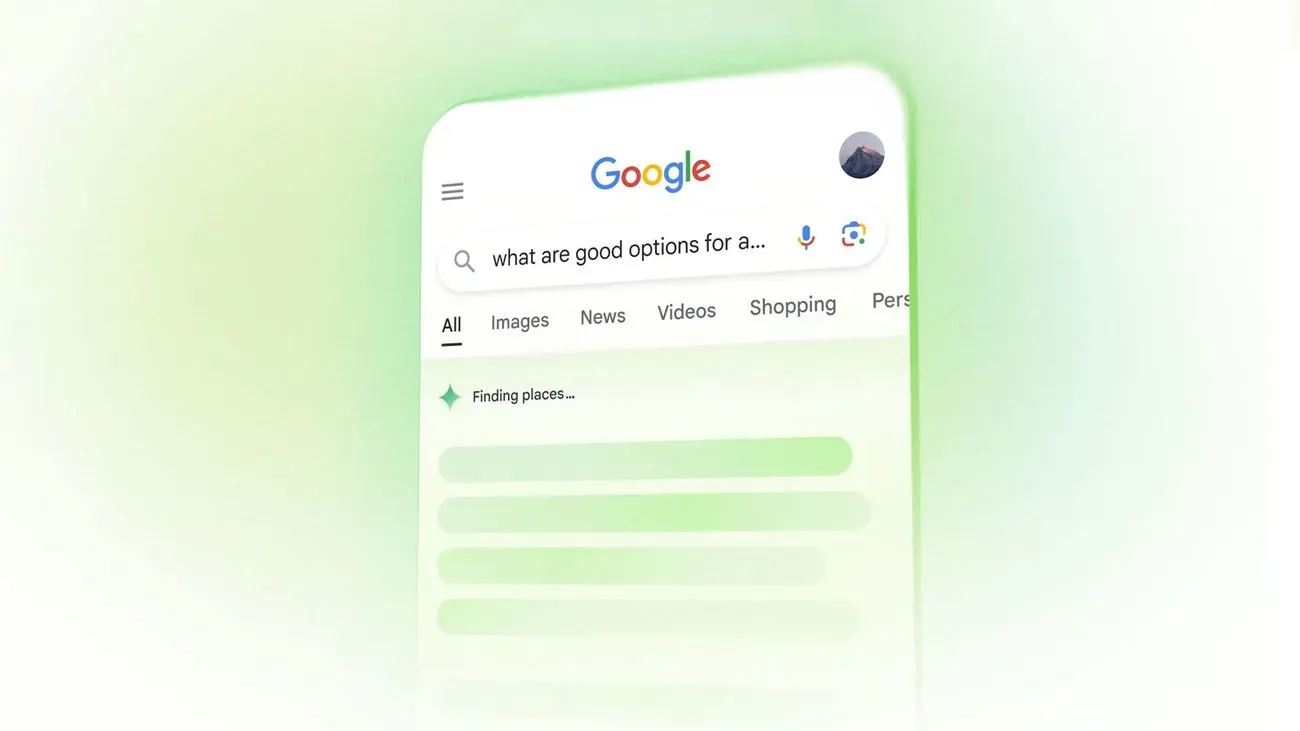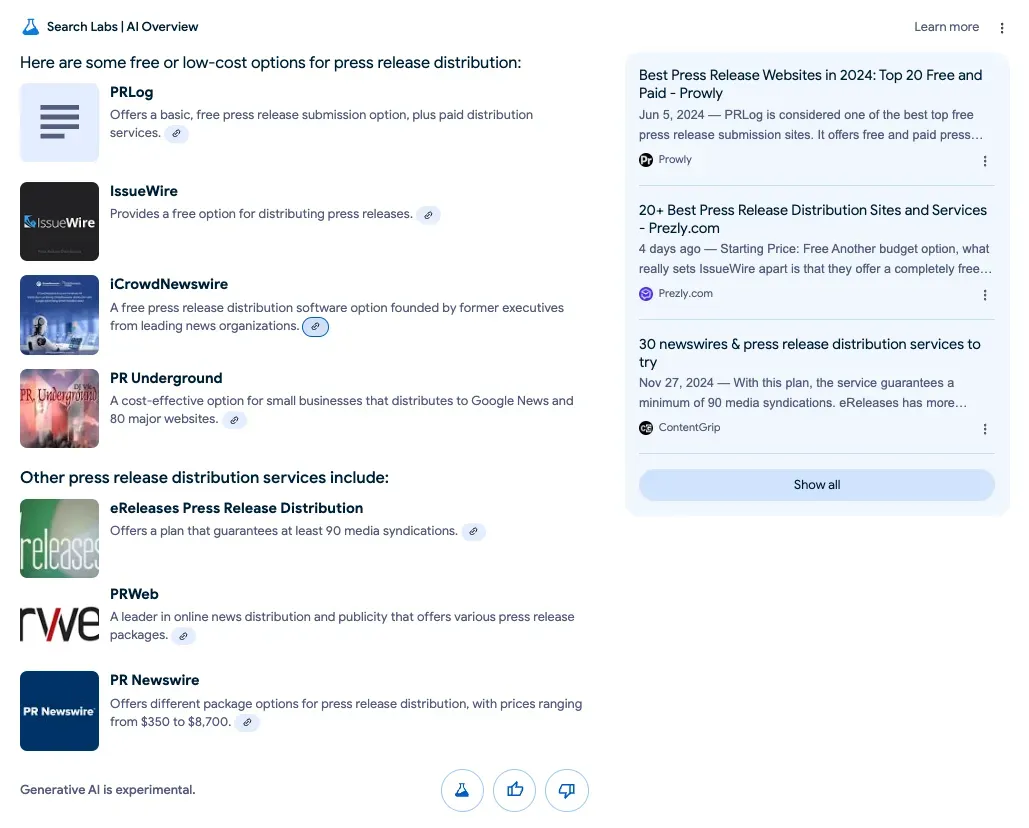How to get Google AI Overviews to notice you—finally
If Google’s AI Overviews is ignoring you, it’s time to fight back. Here’s the playbook to get noticed and get clicks.

Google’s AI Overviews is a new search feature powered by generative AI that delivers summarized answers to user queries at the top of the search results page.
For content marketers, this matters because AI Overviews links to relevant sites it uses as sources. Since the featured answer in the AI summary displays the link source, this increases the likelihood that users will visit your site for more detailed information.
We’ve compiled actionable steps to help you get your content featured in Google’s AI Overviews and capitalize on this new opportunity for visibility and clicks.
What are AI Overviews?
AI Overviews is Google’s AI-powered tool that provides concise, easy-to-read answers to user queries directly in search results. It was introduced in 2024, replacing its experimental version known as the Search Generative Experience (SGE).
Sitting above traditional organic search results, AI Overviews includes:
- A generated answer to the query
- Supporting links to websites
- Dropdown links that corroborate each section of the answer
Where does AI Overview get its data?
Google’s AI Overviews pulls information from several sources, as reported by Partoo.co and Exposure Ninja:
- The Knowledge Graph: A massive database that connects entities like people, places, and events. Data providers include Wikipedia, The Guardian, and Bloomberg.
- Google’s tools and databases: These include Google Maps, Google Business Profile, and other structured tools that feed directly into Google’s ecosystem.
- Websites: AI Overviews references web pages with clear, well-structured content that directly answers user queries.
- User-generated content (UGC): Photos, reviews, and social media posts, such as TikTok videos, can also inform AI Overviews responses.
Why it matters for marketers
For marketers, being featured in AI Overviews brings significant benefits:
- Increased visibility: Your content appears at the very top of search results.
- Higher click-through potential: Users often click on links provided within AI Overviews to verify or explore more details.
- Competitive edge: Sites not listed in AI Overviews miss out on potential traffic opportunities.
How to get your content featured in AI Overviews

Google’s AI Overviews is designed to provide fast, clear, and reliable answers to user queries. To increase the likelihood of your content being featured, here are the key steps:
1. Ensure your site is crawlable and indexable
Your content won’t appear in search results, let alone AI Overviews, unless Google can access and index it.
- Use tools like Google Search Console to check for crawl errors.
- Submit XML sitemaps to help Google discover your pages.
2. Follow E-E-A-T principles
E-E-A-T stands for Experience, Expertise, Authoritativeness, and Trustworthiness — factors Google uses to evaluate content quality.To meet these standards:
- Provide credible, accurate information.
- Highlight your authority with author bios, credentials, and trusted backlinks.
- Regularly update your content to maintain relevancy.
3. Structure content for quick, high-readability answers
Google’s AI Overview prioritizes content that directly addresses user queries with clarity and precision. According to findings and hypotheses from Exposure Ninja, AI Overview links often behave similarly to traditional Featured Snippets, which highlight short, clear sections of text to directly answer a user’s query.
The links featured in AI Overviews frequently include text fragments—specific highlighted portions of a webpage—indicating that Google’s AI favors concise, straightforward passages that are easy to summarize without misinterpretation. This has led to the hypothesis that:
Content structured with short, high-readability answers is more likely to be featured in AI Overviews results.
To optimize your content:
- Answer the query upfront: Provide a clear, 1–2 sentence summary in the first paragraph.
- Write for readability: Use simple language, avoid jargon, and keep sentences short.
- Break content into scannable sections: Use headings, bullet points, and tables to organize information efficiently.
- Focus on brevity: Highlight key points in a concise format to align with Google’s AI-generated responses.
For example, if someone searches, “What is a sponsored tag?”, the ideal structure would immediately provide a brief definition in 1–2 sentences, followed by supporting details in subsequent paragraphs.
By structuring content this way, you increase the chances of your page being used as a reliable source in AI Overviews while minimizing the risk of misinterpretation.
4. Use structured data
Structured data (Schema Markup) helps search engines understand your content better.
- Add schema for FAQs, how-tos, and definitions.
- Use tools like Google’s Rich Results Test to validate your structured data.
5. Focus on already ranking content
AI Overviews often pulls answers from pages already ranking in the top search results. To improve your chances:
- Optimize your content for high-volume keywords.
- Enhance existing top-performing pages with concise answers, updated information, and structured data.
- Improve page speed, mobile responsiveness, and overall user experience.
However, it’s important to note that even pages ranking well in organic results are not guaranteed to appear in AI Overviews. According to Exposure Ninja, Google appears to prioritize content that provides straightforward answers over lengthy or overly complex explanations.
6. Submit changes via Google Search Console
When you optimize a page for AI Overviews, request reindexing via Google Search Console.
- Inspect the page URL and click on “Request Indexing.”
- This step ensures Google processes your changes quickly, sometimes within hours.
Google’s AI Overviews offers marketers a new opportunity to gain visibility and drive traffic. While there’s no guaranteed way to appear in these AI summaries, focusing on delivering clear, concise, and valuable content gives you the best shot.
By structuring your content to directly answer user queries, implementing structured data, and ensuring your pages rank well in traditional search results, you can position your site as a trusted resource for Google’s AI Overviews.

FAQs and recap
1. What are AI Overviews?
AI Overviews are Google’s AI-generated answers that appear at the top of search results. They summarize key information from trusted sources and provide links to those websites.
2. How to get featured in AI Overviews? To increase the chances of your content being featured in AI Overviews:
- Make sure your site is crawlable and indexable.
- Follow E-E-A-T principles (Experience, Expertise, Authoritativeness, Trustworthiness).
- Answer queries clearly and directly in the first paragraph.
- Use short, simple sentences and break content into headings, bullet points, and lists.
- Add structured data (like FAQs or definitions).
- Optimize content that’s already ranking well in regular search results.
3. Can I turn off AI Overviews?
Yes, you can remove your content from Google’s AI Overviews using preview controls like "nosnippet", "max-snippet", and "data-nosnippet".
However, there’s a catch: Using these controls will also remove your content from regular search snippets, making your search listing look incomplete. This can result in a significant drop in click-through rates (CTR).
If you’re uncomfortable with your content appearing in AI Overviews, weigh the pros and cons carefully—removing it could limit visibility and reduce traffic.
4. What is the simple overview of AI Overviews?
AI Overviews is a Google search feature that uses AI to generate quick, easy-to-read answers. It pulls information from trusted sources like websites, Google’s Knowledge Graph, and user-generated content. It sits above the regular search results and includes links to the sources it uses.



